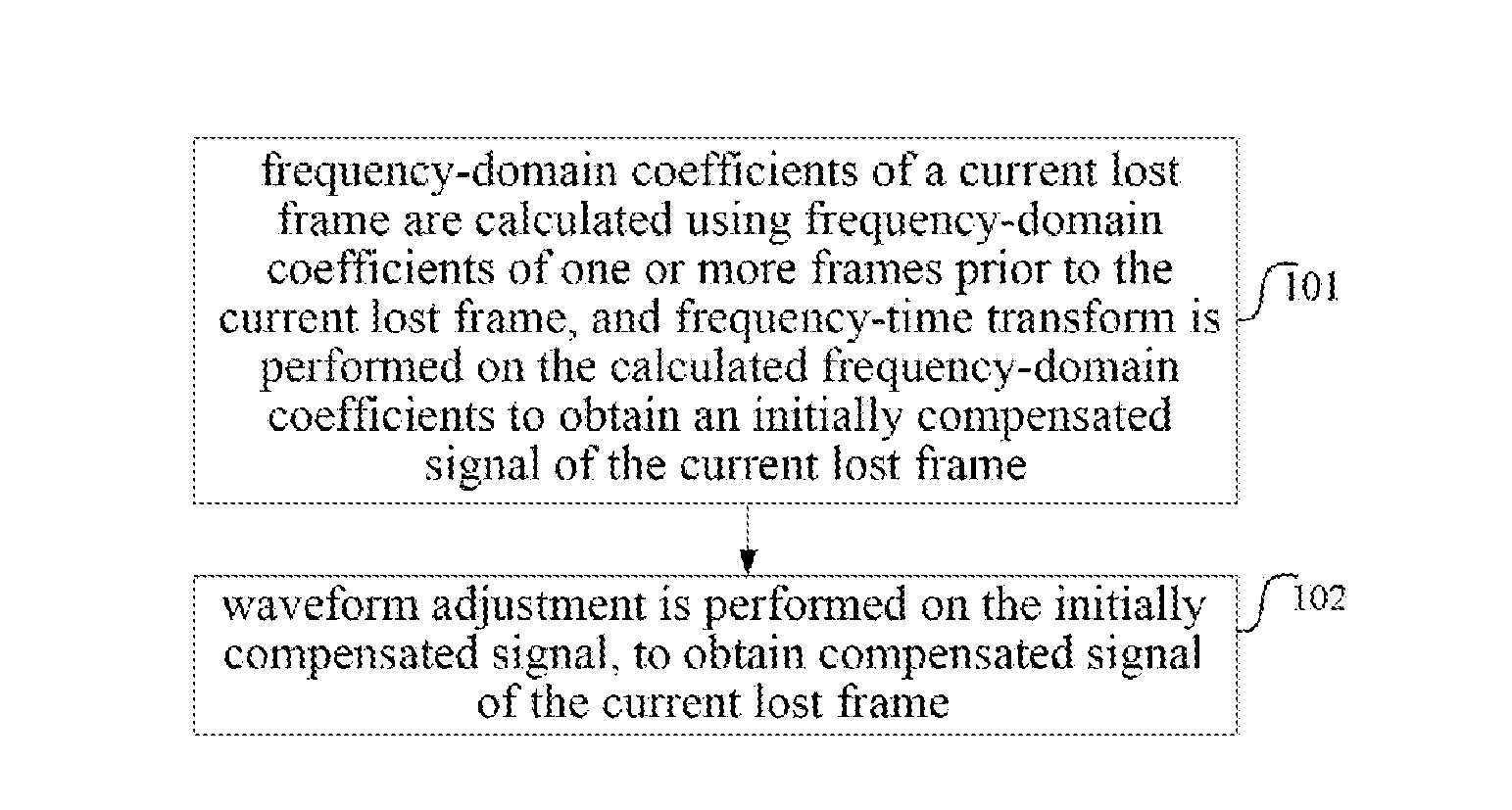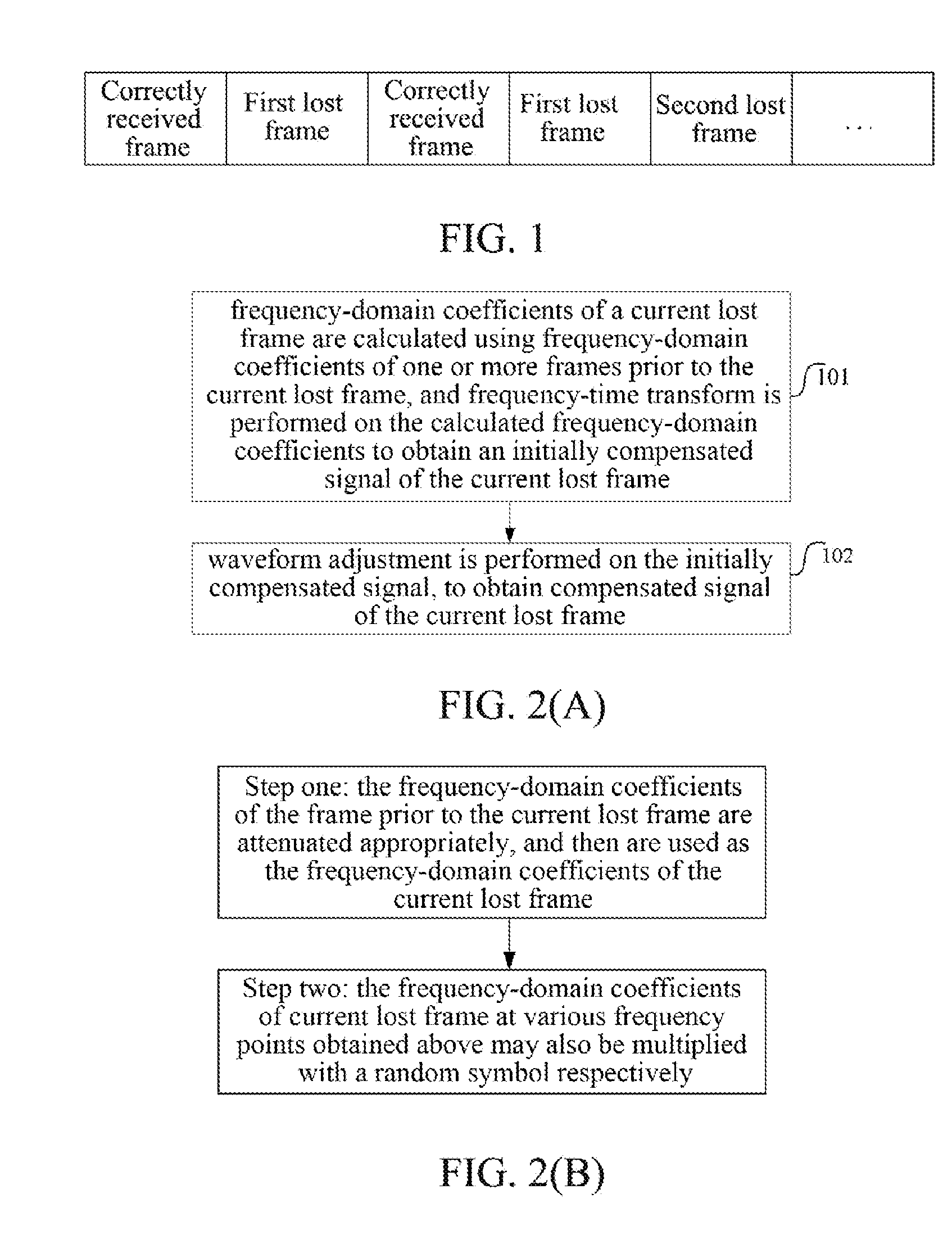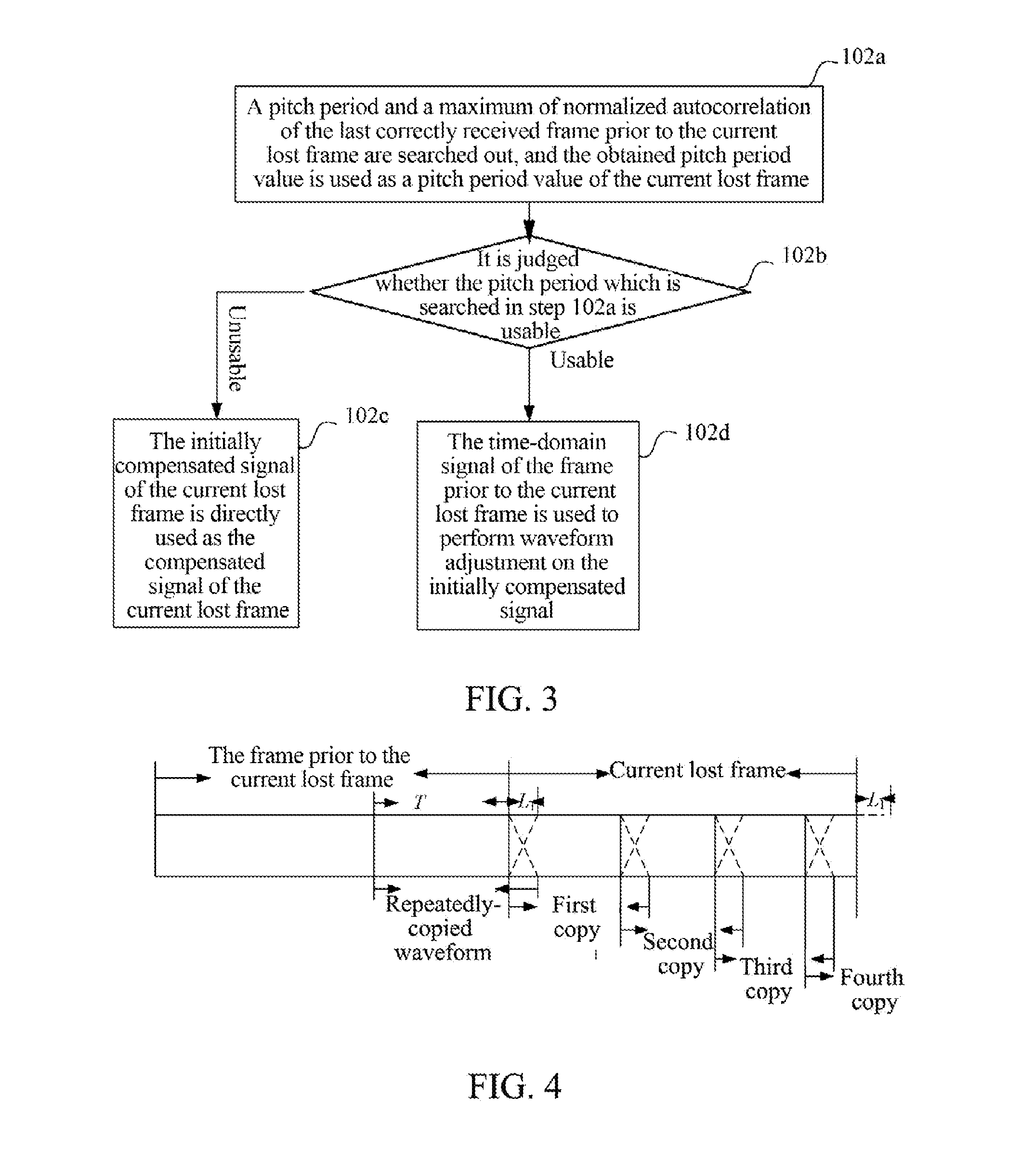Method and Apparatus for Frame Loss Concealment in Transform Domain
a transform domain and frame loss technology, applied in the field of audio codec, can solve the problems of high computational complexity, low compensation effect, and rapid decrease of synthetized tone quality at the decoding terminal, and achieve the effect of reducing computational complexity, and reducing the loss of fram
- Summary
- Abstract
- Description
- Claims
- Application Information
AI Technical Summary
Benefits of technology
Problems solved by technology
Method used
Image
Examples
embodiment one
[0182]As shown in FIG. 2 (A), a method for frame loss concealment in a transform domain according to the present embodiment comprises the following steps.
[0183]In step 101, frequency-domain coefficients of a current lost frame are calculated using frequency-domain coefficients of one or more frames prior to the current lost frame, and frequency-time transform is performed on the calculated frequency-domain coefficients to obtain an initially compensated signal of the current lost frame;
[0184]In step 102, waveform adjustment is performed on the initially compensated signal, to obtain compensated signal of the current lost frame.
[0185]Steps 101 and 102 will be described respectively in detail below in conjunction with accompanying drawings.
[0186]As shown in FIG. 2(B), a method for calculating frequency-domain coefficients of the current lost frame further comprises the following steps.
[0187]In step one, the frequency-domain coefficients of the frame prior to the current lost frame are...
embodiment 1a
[0235]As shown in FIG. 2 (A), a method for frame loss concealment in a transform domain according to the present embodiment comprises the following steps.
[0236]In step 101, frequency-domain coefficients of a current lost frame are calculated using frequency-domain coefficients of one or more frames prior to the current lost frame, and frequency-time transform is performed on the calculated frequency-domain coefficients to obtain an initially compensated signal of the current lost frame;
[0237]In step 102, waveform adjustment is performed on the initially compensated signal, to obtain compensated signal of the current lost frame.
[0238]Steps 101 and 102 will be described respectively in detail below in conjunction with accompanying drawings.
[0239]As shown in FIG. 2(B), a method for calculating frequency-domain coefficients of the current lost frame further comprises the following steps.
[0240]In step one, the frequency-domain coefficients of the frame prior to the current lost frame are...
embodiment two
[0289]In step 201, phases and amplitudes of a plurality of frames prior to the current lost frame at various frequency points are obtained, phases and amplitudes of the current lost frame at various frequency points are obtained by performing linear or nonlinear extrapolation on the phases and amplitudes of a plurality of frames prior to the current lost frame at various frequency points; and frequency-domain coefficients of the current lost frame at frequency points are obtained through phases and amplitudes of the current lost frame at various frequency points; and
[0290]in step 202, the compensated signal of the current lost frame is obtained by performing frequency-time transform.
[0291]As shown in FIG. 5, in step 201, if the frequency-domain representations of various information frames in the codec are in an MDCT domain, it needs to establish MDCT-MDST domain complex signals of a plurality of frames prior to the current lost frame using Modified Discrete Sine Transform (MDST). T...
PUM
 Login to View More
Login to View More Abstract
Description
Claims
Application Information
 Login to View More
Login to View More - R&D
- Intellectual Property
- Life Sciences
- Materials
- Tech Scout
- Unparalleled Data Quality
- Higher Quality Content
- 60% Fewer Hallucinations
Browse by: Latest US Patents, China's latest patents, Technical Efficacy Thesaurus, Application Domain, Technology Topic, Popular Technical Reports.
© 2025 PatSnap. All rights reserved.Legal|Privacy policy|Modern Slavery Act Transparency Statement|Sitemap|About US| Contact US: help@patsnap.com



